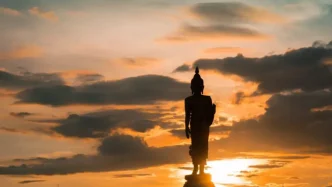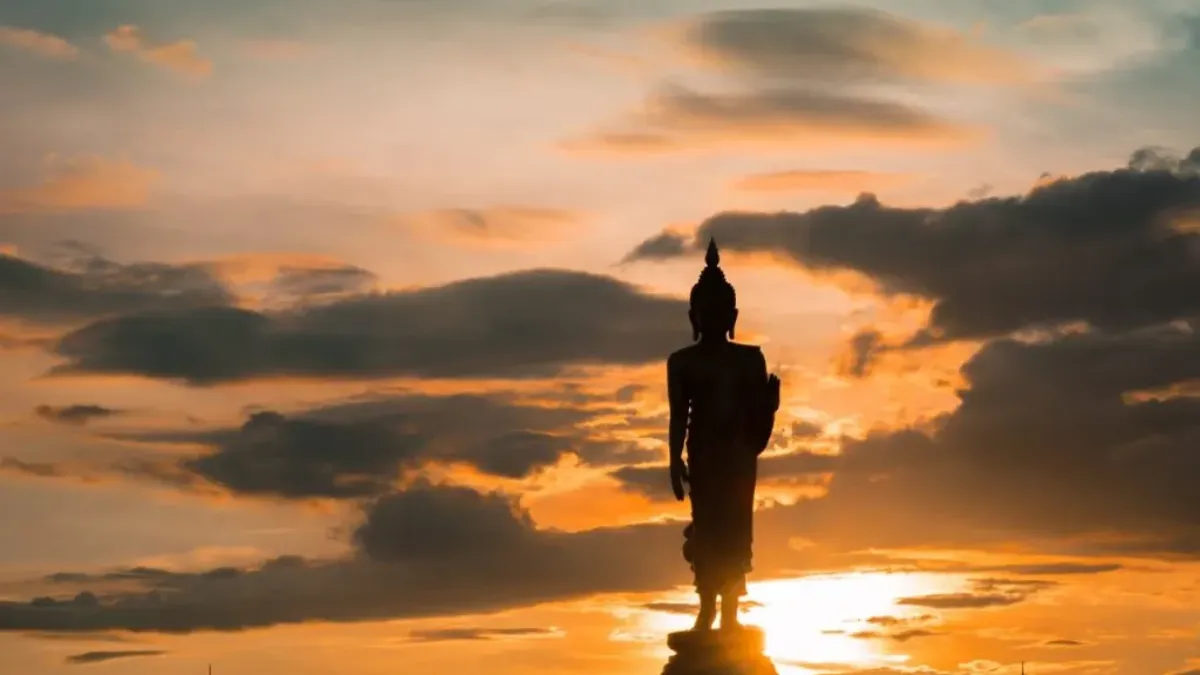In the quiet dusk of July 10, 2025, a small group of saffron-robed monks at Wat Pasukato temple in north-eastern Thailand’s Chaiyaphum province embarked on a symbolic journey. Marking Asalha Bucha, a revered Buddhist holiday commemorating the Buddha’s first sermon over 2,500 years ago, they carried not candles or incense, but young plant saplings. Their procession around the temple’s main building was both a spiritual ritual and a powerful statement on the urgent need to protect the environment.
A Sacred Duty to Protect the Forest
At the heart of this ceremony was Venerable Paisal Visalo, the abbot of Wat Pasukato and founder of Trees for Dharma, an organization of Thai monks dedicated to reforestation and forest preservation. “It is our duty to protect the forest” he said, during the event in Chaiyaphum, a region over five hours’ drive from Bangkok. “The forest is the source of Thai culture and livelihood. Once the forest is protected, the livelihood of the villagers is also protected.”
This blending of Buddhist practice with environmental activism is part of a growing movement among Thailand’s forest monks. Across the country, more than 90 temples, including several in Bangkok, marked Asalha Bucha in 2025 by swapping traditional offerings like candles and incense—often discarded after a single use—for saplings. At Wat Pasukato alone, over 100 plants, including avocado, guava, and ficus, were prepared with input from ecology experts to ensure they suited the local climate and biodiversity. After the ceremony, monks and villagers took the saplings home to plant, turning a religious observance into a tangible act of conservation.
Deforestation’s Toll on Northern Thailand
The urgency of such efforts is starkly evident in regions like Chaiyaphum, part of northern Thailand, which has been scarred by deforestation driven by monocrop farming, logging, and mining. Some monks in the area have also pointed to disruptions caused by a nearby wind farm built along an ecological corridor, which they say has harmed local biodiversity. According to Global Forest Watch, Thailand lost over 6,000 hectares of forest in 2024 alone, largely due to land grabs and agricultural expansion. This loss is part of a broader crisis across South-east Asia, which hosts nearly 15 percent of the world’s tropical forests but suffers some of the highest deforestation rates globally, losing 1.2 percent of its forest cover annually.
Yet, there are glimmers of hope. Thailand’s forest cover has stabilized at around 38 percent, up from a low of 25 percent in the 1990s, thanks to grassroots efforts by communities and monks, alongside government policies banning certain logging practices, as reported by the World Bank. Villagers, students, and devotees joined the July 10 procession at Wat Pasukato, some walking barefoot behind the monks with saplings in hand. “The ceremony with the trees seems more active” said Ms. Sukanda Kruda, a local teacher in her 20s who attended with her young relatives. For many, the event offered a meaningful way to engage with both faith and environmental stewardship.
Buddhism and Nature: An Ancient Bond
The connection between Buddhism and nature runs deep, especially in Theravada Buddhism, the dominant form in Thailand. Forests hold particular significance, tied to key moments in the Buddha’s life. “Buddha was born, found enlightenment, and died under a tree,” explained Venerable Dhamma Caro of Wat Pa Mahawan, a forest temple in Thailand’s north-eastern ecological corridor that has spent decades reforesting its surroundings. “Even for meditation, the tree is important. The loss of a forest is an environmental problem, but also important to Buddhism.”
This reverence for nature has inspired creative forms of activism among forest monks, whose tradition of retreating to the woods for ascetic practice dates back centuries. Today, their role as guardians of the forest extends beyond spirituality to address ecological collapse. Some monks ordain trees by wrapping them in orange robes to declare them sacred, while others lead reforestation drives, teach ecological ethics in sermons, or recycle plastic into robes. Wat Pasukato itself has reforested approximately 1.5 square kilometers since the late 20th century, with other temples across Thailand following suit by planting on their grounds and donated lands.
Challenges Amid Changing Times
Despite these efforts, challenges remain. A forest monk from north-eastern Thailand, who has spent a decade reforesting the region but declined to be named due to fear of backlash, lamented a perceived decline in respect for monastic efforts. “There seems to be less respect given to the robe these days” he said. “Some businesses disregard our efforts.” Additionally, dwindling religious populations and insufficient government policy support hinder the monks’ conservation work, even as the climate crisis intensifies.
Still, the symbolism of replacing candles with saplings on holy days— an idea first proposed by Venerable Paisal Visalo about five years ago—resonates deeply. In Buddhist belief, planting trees generates merit and embodies compassion in action. “Planting the tree not only helps people, but it also helps the animals, and the overall environment” noted another monk at the Wat Pasukato procession, who also preferred anonymity to avoid public attention. “That is why it generates merit.”
A Regional Movement of Faith and Climate Action
Thailand is not alone in weaving environmental consciousness into religious practice. Across South-east Asia, communities of faith are adapting rituals to confront the climate crisis. In Vietnam’s Lam Dong province, a temple constructed entirely from recycled materials stands as a testament to sustainable spirituality. Monks in Yangon, Myanmar, have joined large-scale protests against dam construction, while in Cambodia’s Oddar Meanchey province, village monks patrol day and night as the last line of defense against illegal loggers. Vietnam, too, reported a 3.7 percent increase in forest coverage in 2024, according to its national statistics authority, reflecting a mix of community and policy-driven efforts.
What unites these initiatives is a shared view of nature as sacred rather than a mere resource to exploit. Venerable Paisal Visalo articulated this philosophy at Wat Pasukato: “In Buddhism, internal peace and external peace are not separate. If we want to find peace in ourselves, we need to work for the sake of society and the environment.” He added, “The less selfish we are, the more peace we achieve in our mind.”
New Roots for Ancient Traditions
For some younger monks, the Asalha Bucha ceremony at Wat Pasukato was a novel experience. Venerable Huy, a Vietnamese monk ordained just five days before the holiday, found the event eye-opening. “It’s a first and new experience for me, so it’s pretty interesting,” he said. “Forest means nature, and nature is dharma. So, to advocate for forests and reforestation is to protect nature, and to advocate for Dharma.” In Buddhism, Dharma encompasses the Buddha’s teachings, cosmic law, and the path to enlightenment—a fitting parallel to the monks’ environmental mission.
As the sun dipped below the horizon on July 10, casting long shadows over Wat Pasukato’s silhouette, monks and villagers carried their saplings home. These small plants served as quiet reminders that even the most ancient traditions can adapt and grow new roots in the face of modern challenges. Whether through planting trees or ordaining them as sacred, Thailand’s forest monks are redefining what it means to honor the past while safeguarding the future.















